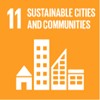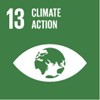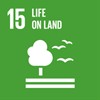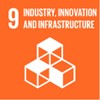
The Company is committed to produce high quality electricity and steam power, emphasizing service quality to maximize customer satisfaction, and conducting business sustainably while efficiently using the resources. The Company has established an environmental and safety policy, including the formation of committees and departments responsible for environmental management, to ensure that operations align with our established policy.
Management Approach
|
|
|
|
|
|
|
|
|
|
|
|
|
Overall Environmental Performance
| Number of complaints regarding compliance with environmental laws | 1 time | |
| Number of environmental law and regulation violations | 0 time | |
| Total amount of biomass ash used as soil conditioner and separated sodium sulfate from ash returned to the system | 215,847.06 tons | |
| Total amount of greenhouse gas emissions 1 | 6,119,485 tCO2e | |
| The amount of greenhouse gas emissions Scope 1 | 2,245,494 tCO2e | |
| The amount of greenhouse gas emissions Scope 2 | 51,324 tCO2e | |
| The amount of greenhouse gas emissions Scope 3 | 3,822,667 tCO2e | |
| Total amount of GHG intensity | 193.62 tCO2e per million Baht of FY2023 revenue | |
| Number of non-compliance or violation cases on greenhouse gas and climate change policies | 0 Case | |
| Total amount of water withdrawal | 67,648.20 megaliter | |
| Total amount of water withdrawal from water sources located in water stressed areas | 0 megaliter | |
| Number of non-compliance or violation cases on water management policies | 0 case | |
| Total amount of water intensity | 0.017 megaliter /MWh | |
| Total amount of water discharge intensity | 0.0001 megaliter/MWh | |
| Total amount of waste generated | 361,067.11 tons | |
| Total amount of waste diverted from disposal | 261,976.20 tons | |
| Total amount of disposed | 99,090.91 tons | |
| Number of non-compliance or violation cases on waste management policies | 1 case | |
| Total amount of nitrogen oxide (NOx) | 94.33 PPM | |
| Total amount of sulfur dioxide (SOx) | 65.00 PPM | |
| Total amount of Persistent Organic Pollutants (POP) | 0 PPM | |
| Total amount of Volatile Organic Compound (VOC) | 0 PPM | |
| Total amount of Particulate Matter (PM) | 60.81 PPM | |
| Number of non-compliance or violation cases on pollution management policies | 0 case |

Adherence to laws and regulations is paramount for every organization's operations. Failure to comply can result in severe consequences, including business license revocation or legal action, leading to financial losses, tarnished reputation, and diminished stakeholder trust. Recognizing this, the Company prioritizes strict adherence to laws and industry standards across all processes. This begins with fostering awareness among employees and implementing the Company's environmental policy. This entails vigilantly monitoring and ensuring compliance with environmental regulations pertinent to the Company, staying abreast of evolving environmental trends and regulations, and consistently updating policies to align with changing legal requirements and industry standards.
Quality, Environment, Occupational Health and Safety Policy and Sustainability Policy
The Company implements comprehensive policies covering quality, environment, occupational health, and safety, supported by dedicated divisions overseeing these areas. Emphasizing the importance of environmental management, the Company focuses on aspects like air and water quality and standardized industrial waste management. Rigorous inspections and follow-ups ensure operations adhere to specified criteria and comply with relevant laws, regulations, and efficiency standards.
- Establish objectives aligning with organizational context and strategic direction, fostering awareness of risks and opportunities for stable production performance and development to meet stakeholder expectations.
- Sustainably procure resources and select raw materials, equipment, and production processes maximizing efficiency while prioritizing impacts on quality, environment, safety, and energy consumption.
- Safeguard the environment and prevent pollution, ensuring a safe work environment free from health hazards, injuries, illnesses, occupational risks, as well as fire, chemical, and electrical hazards.
- Continuously enhance and refine management systems for quality, environment, safety, occupational health, and energy.
- Adhere strictly to missions, laws, and regulations concerning quality, environment, safety, occupational health, and energy.
- Prioritize and allocate resources adequately, including personnel, information technology, time, and budget, to support objectives effectively.
Furthermore, the Company has established a sustainability policy to guide management in addressing environmental concerns aligned with key sustainability objectives. This policy aims to raise awareness among executives and employees at all levels regarding environmental risks and the impact of business operations. It encompasses areas such as water management, air pollution, and ecosystem preservation to address environmental sustainability issues effectively.
Key Performance
| The Company has established a sustainability policy. | For the first year | |
| Reviewing and improving quality, environment, occupational health, and safety policies. | Continuously | |
| Number of cases of violations of environmental laws for which fines are payable. | 0 case | |
| Number of cases of environmental law violations without fines | 0 case | |
| Number of complaints regarding compliance with environmental laws | 1 time | |
| The total amount of fines paid for violations of environmental laws. | 0 THB | |
Total amount of budget for operations related to policy and compliance with environmental laws.
|
15.3 million THB |


Efficient resource management in the production process is vital for long-term stability and competitiveness. It involves minimizing resource loss and maximizing value creation by reutilizing remaining resources both within and outside the organization's business system.
Key Performance
| The amount of waste recycled back into the system | 215,847.06 tons |
and Climate Change Management




The world is experiencing a surge in natural disasters such as floods, forest fires, and droughts, largely attributed to global warming and climate change induced by human activities such as fossil fuel consumption and greenhouse gas emissions. These phenomena adversely affect ecosystems, biodiversity, and human welfare.
Amidst the global effort to combat rising greenhouse gas emissions and limit global temperature increases to below 1.5 degrees Celsius, the energy sector plays a pivotal role in driving sustainable supply chains. Committed to this cause, the Company aims to transition its operations to 100% clean energy and achieve net zero greenhouse gas emissions in the future. Recognizing its responsibility as a major electricity producer with major reliance on coal, the Company is dedicated to mitigating greenhouse gas emissions, both directly and indirectly, to address the urgent challenge of global warming.
Emerging Risks
Global warming and climate change present significant environmental challenges, with efforts focused on limiting global temperature rise to 1.5 degrees Celsius. This poses risks to the Company's energy production operations reliant on coal, a fossil fuel targeted for reduction. The spotlight on fossil fuels could lead to decreased demand, driven by policies favoring cleaner energy sources, potentially impacting operational costs through measures like carbon credits and raw material price fluctuations.
To mitigate this emerging risk, the Company has diversified its energy portfolio by investing in clean energy sources like biomass and solar power. This strategy offers consumers alternative options, reducing reliance on coal and enabling significant reductions in greenhouse gas emissions.
| Total amount of Greenhouse Gas Emissions Scope 1 | 2,245,494 tCO2e | |
| Total amount of Greenhouse Gas Emissions Scope 2 | 51,324 tCO2e | |
| Total amount of Greenhouse Gas Emissions Scope 3 | 3,822,667 tCO2e | |
| Total amount of Greenhouse Gas Emission Intensity | 193.62 tCO2e per million Baht of FY2023 revenue |




Amidst ongoing global population growth that leads to heightened demand in resource and energy consumption, the Company recognizes the mounting challenges in energy management. This necessity underscores the need for effective management and the establishment of resource efficiency guidelines. Moreover, the Company actively seeks opportunities in renewable energy to advance its transition towards a clean energy enterprise, thereby mitigating environmental impact, cutting organizational costs, and ultimately aiming for carbon neutrality.
Following Thailand's ratification of the United Nations Framework Convention on Climate Change, embodied in the Paris Agreement of 2016, with the objective of fostering a low-carbon society and striving for carbon neutrality by 2050, the Company, as a purveyor of electricity derived from coal and biomass, acknowledges the imperative of transitioning towards cleaner energy sources and reducing reliance on fossil fuels. Against a backdrop of escalating demand for clean energy from industrial clients and the Electricity Generating Authority of Thailand (EGAT), the Company has astutely assessed both opportunities and potential risks. Consequently, a dedicated working group has been instituted to establish energy management indicators and formulate an Energy Management Policy, providing a comprehensive framework for organizational adherence.
Energy Management Policy
In its operation of electricity and steam generation, the Company is steadfast in its commitment to environmental responsibility, striving to be a conscientious electricity provider. Accordingly, the Company prioritizes efficient energy management, aiming to instill confidence across its customer base while contributing to national energy security. To this end, the Company has formulated an Energy Management Policy, centered on enhancing organizational efficiency, fostering energy conservation, and facilitating energy initiatives through employee and stakeholder training.
Emerging Risks
Changes in energy policies or legislation stemming from war situation, shifts in economic dynamics due to the pandemic, or evolving consumer behaviors influenced by climate change trends pose potential risks to the Company's operations. Governmental alterations might complicate the Company's energy distribution activities, with potential controls on raw material pricing for energy production, such as fossil fuels, or greenhouse gas emissions regulations affecting fossil fuel-based energy production. Additionally, global circumstances can lead to fluctuations in raw material costs, potentially driving up fuel expenses and, consequently, energy distribution prices. This could prompt consumers to gravitate towards cleaner energy alternatives, spurred by ongoing innovations in clean energy technologies. Such shifts in consumer preferences could ultimately jeopardize the Company's revenue streams.
As a prominent figure in the energy production sector, the Company remains acutely attuned to the array of risks inherent in its operations. This vigilance is upheld through regularly monitoring of news and information, particularly concerning governmental amendments in energy policies and legislation. Furthermore, the Company actively engages in the exploration and advancement of clean energy technologies, such as biomass and solar energy, to cater to the escalating demand for cleaner energy options and mitigate the risks associated with overreliance on fossil fuels, a significant contributor to climate change. Recognizing the considerable environmental impact of the energy industry, akin to other sectors, the Company is unwavering in its dedication to reducing its ecological footprint. This commitment extends to fostering initiatives aimed at curbing climate change while concurrently addressing the evolving preferences of consumers gravitating towards clean energy alternatives.
Management Approach
Energy Management Working Group Structure

Company has instituted an energy management working group to adhere to the Royal Decree on Controlled Factories B.E. 2540, which mandates energy management within the organization and necessitates certification by an energy auditor appointed by the Ministry of Energy. This initiative aligns with the directives outlined in the Energy Promotion Act B.E. 2535 (Amended Edition B.E. 2007) of the Department of Alternative Energy Development and Efficiency, Ministry of Energy. Tasked with executing energy management in accordance with Company policies, the working group oversees coordination, control, and compliance with established practices and policies. Additionally, it organized training sessions and energy conservation initiatives for employees and stakeholders, while diligently monitoring and reporting performance outcomes. Regular review of the Energy Management Policy further ensures ongoing alignment with objectives and regulations.
Energy Management System Assessment Committee
Moreover, the Company has established a committee to appraise the energy management system within the organization. This committee is responsible for evaluating the energy management system, encompassing policies, objectives, and procedures, to ensure their alignment with the established plan, conducted at least once annually. In 2023, it was determined that the organization’s energy management operations were precise and comprehensive, meeting the requisite standards. Subsequently, the Company has utilized the assessment findings for review purposes and to rectify any identified deficiencies. Areas earmarked for improvement include the preliminary assessment of energy management conditions by enhancing public relations communications concerning the Company’s energy conservation policy.
Energy Conservation Operational Plan (2023 – 2025)
The Company has devised a three-year energy conservation plan (2023 – 2025) for the 304 Industrial Park area in Prachinburi, encompassing PP5, PP6, PP7, PP8, PP9, PP5A, PP11, as well as the 304 Industrial Park area in Chachoengsao, comprising PP3 and PP4, for oversight and sustained monitoring. This includes allocating an appropriate budget for the energy conservation project and formulating a maintenance plan, alongside annual system performance enhancements. Moreover, the Company underscores the necessity of continual monitoring and regular maintenance, both on a monthly and quarterly basis. This is achieved by assigning responsibilities to the energy management working group and maintenance personnel, ensuring regular updates and joint preparation for annual maintenance tasks.
| Energy Consumption | 2023 |
|---|---|
| Coal (Ton) | 1,270,225.95 |
| Biomass (Ton) | 1,504,881.01 |
| Black Liquor (Ton) | 511,558.70 |
| Diesel (Liter) | 3,105,251.00 |
| Fuel Oil (Liter) | 5,101,933.04 |
| NGV (Ton) | 9,379.76 |
| LNG (Ton) | 913.26 |





Presently, the issue of water scarcity has escalated across numerous sectors, attributed to global warming and climate change. Consequently, there has been a substantial decline in both the quantity and quality of water in various regions domestically and internationally. This phenomenon adversely impacts not only the industrial sector and the environment but also undermines the quality of life and human well-being.
As a business operator and service provider offering raw water and industrial water, the Company recognizes the significance of efficient water resource management. This entails prioritizing water quality and the potential environmental and ecological impacts of its operations. Accordingly, the Company has formulated policies and practices to adhere strictly to pertinent regulations and laws, ensuring comprehensive water management for maximum efficiency. Moreover, the Company meticulously monitors risks and impacts across corporate governance, societal, and environmental spheres.
Water Management Policy
The Company has implemented a comprehensive Water Management Policy as an integral component of its Quality, Environmental, Occupational Health and Safety Policy. This policy prioritizes the production of industrial water to stringent quality standards, with adherence to the ISO 9001:2015 quality management system for efficient oversight of activities and processes. Compliance with customer specifications, relevant laws, and regulations is paramount. The policy is effectively communicated throughout the organization, ensuring understanding and adherence, and is made available for appropriate stakeholder disclosure.
Operational Targets
To conduct assessments of water scarcity risks in the regions where it operates and draws water for its operations.
Emerging Risks
The procurement and distribution of raw water and water for industrial purposes may be subject to various risks, such as changes in weather patterns, droughts, floods, and fluctuations in sea levels, as well as alterations in legal requirements or government policies. In addition to the United Nations' sustainable development objectives, which advocate for universal access to water and sustainable water management and sanitation for all, the World Bank Group has set a target to achieve water security by 2030. This involves the development and implementation of practical solutions to improve water management and the promotion of water-related risk management within the business sector.
Therefore, risk management and sustainable water management are vital and have a notable impact on both the quantity and quality of water used in the Company's production processes. Failure to operate while ensuring water security could jeopardize the Company's reputation and stability in the future. Consequently, the Company places great emphasis on sustainable water management, aligning operations with the various risks and challenges to ensure the sustainable provision of water services.
Key Performance
| Total water withdrawal from all areas | 71,696.21 megaliters | |
| Total water consumption | 71,696.21 megaliters | |
| Total wastewater discharge | 599.70 megaliters | |
| Total water withdrawal from areas with water stress | 0 ton | |
| Water intensity | 0.017 megaliter/MWh | |
| Wastewater discharge intensity | 0.0001 megaliter/MWh |





Managing waste generated from the electricity production process is a priority for the Company, given the varied nature of the waste produced and the need for tailored management approaches for each type. It is imperative to implement systematic management practices adhering to governmental standards and regulations to mitigate legal risks and prevent adverse environmental and community health impacts. Furthermore, waste encompasses both pollutants and materials no longer in use, originating from both office buildings and the production processes of electricity, industrial water, and natural gas.
The Company also prioritizes addressing competitiveness risks associated with waste management. This involves researching and developing processes to utilize waste or by-products from production, thereby reducing landfill waste in a sustainable manner. Such initiatives may yield returns in terms of increased revenue or enhanced credibility in long-term sustainable management of the organization.
Waste Management Policy
The Company has developed an environmental management system aligned with ISO 14001:2015 standards, incorporating a waste management policy as an integral component of its Quality, Environmental, Occupational Health and Safety Policy, and as framework for all personnel. This system is designed to ensure proper management of both non-hazardous and hazardous waste in accordance with the regulatory standards set forth by the Department of Industrial Works, aiming to instill confidence among all stakeholders.
Emerging Risks
In the present era, global attention is increasingly focused on mitigating adverse environmental impacts. Guidelines promoting the concept of Zero Waste have gained prominence, aligning with Sustainable Development Goal 12 (SDGs) set by the United Nations, aimed at fostering sustainable production and consumption practices. This involves waste reduction, minimizing the release of hazardous chemicals and waste into the environment, and implementing effective waste management strategies. As a member state of the United Nations, Thailand has enacted legislation and government policies addressing waste disposal to minimize environmental impact. It is anticipated that future waste management regulations may become more stringent to align with UN objectives, potentially impacting the Company. Compliance with stricter regulations could entail increased waste management costs, budget allocations for waste disposal, and quality assessment. Inadequate waste management practices may also lead to community grievances.
The Company acknowledges the significant volume of waste generated by its operations and thus underscores the importance of adhering to sustainable waste management practices. Through the application of technology and innovation in our production processes, we strive to minimize waste generation and resource depletion. We advocate for waste reduction by implementing measures to recycle or upcycle waste materials, thereby mitigating the need for landfill disposal. Our commitment extends to strict compliance with government standards and regulations governing waste disposal. Additionally, we aim to augment our electricity production from clean energy sources, further reducing waste output. We also undertake initiatives to educate stakeholders on waste management practices through regular training and knowledge-sharing campaigns.
Key Performance
| Total amount of waste generated | 361,067.11 tons | |
| Total amount of hazardous waste generated | 90.35 tons | |
| Total amount of non-hazardous waste generated | 360,976.76 tons | |
| Total waste diverted from disposal | 215,851.56 tons | |
| Total hazardous waste diverted from disposal | 4 tons | |
| Total non-hazardous waste diverted from disposal | 215,847.56 tons | |
| - Total non-hazardous waste diverted from disposal (other recovery operations): soil conditioner for eucalyptus tree cultivation | 215,847.56 tons | |
| Total amount of waste disposed | 99,090.91 tons | |
| Total amount of hazardous waste disposed | 86.35 tons | |
| - Total hazardous waste disposal through incineration for energy production | 6.81 tons | |
| - Total hazardous waste disposal through incineration | 3.08 tons | |
| - Total hazardous waste disposal through other methods | 76.46 tons | |
| Total amount of non-hazardous waste disposed | 99,004.56 tons | |
| -Total non-hazardous waste disposed in landfills | 99,004.56 tons |





In the energy sector, particularly in the electricity generation business utilizing coal and biomass, there's an inherent risk of causing air, water, and noise pollution, which it can lead to adverse impacts and disrupt the quality of life for both employees and nearby communities. Recognizing the significance of pollution management, the Company prioritizes addressing the effects on health, well-being, and safety, ensuring adherence to operational standards and regulatory requirements.
Pollution Management Policy
The Company places a strong emphasis on the safety and occupational health management of its personnel within the facility. This commitment is demonstrated through adherence to safety laws, international standards like OSHA NFPA ISO45001:2018, and comprehensive monitoring protocols. Parameters and measurement frequencies, in line with standards, are established for various factors including light intensity, noise levels, chemical exposure, dust levels, heat levels, and concentrations of flammable gases in the workplace.
Additionally, the Company has established operational frameworks concerning environmental management, pollution control, and energy management in line with the ISO 14001:2015 environmental management system standard. This includes a pollution management policy integrated within the broader policy encompassing quality, environment, occupational health, and safety, serving as a guiding framework for all personnel across the Company.
Emerging Risks
In the past 3-5 years, Thailand has experienced recurring PM 2.5 dust conditions due to fluctuating and frequently changing weather patterns. This results in the accumulation of dust particles in the upper atmosphere, exacerbated by reduced rainfall and stagnant wind currents during certain periods. Urban expansion, leading to increased use of vehicles, contributes to various dust issues across Thailand. Additionally, industrial activities, particularly those involving combustion for electricity production, further exacerbate air pollution, posing health risks not only to industrial workers but to the general population as well.
The Company acknowledges the issue of PM 2.5 dust and broader pollution concerns within the country, recognizing the potential impact on its reputation and revenue should pollution from its operations remain unaddressed. To mitigate these risks, the Company is committed in reducing toxins and pollution stemming from its electricity and water production processes. Implementation of pollution management measures includes monitoring and controlling emissions through technological interventions, such as the installation of an Electrostatic Precipitator to capture combustion-derived dust particles.
Furthermore, the Company recognizes the potential pollution ramifications of its operations on adjacent communities. As such, communication protocols have been established to facilitate community engagement, providing avenues for grievances and updates on operational procedures. This ensures prompt dissemination of information to the community should any issues arise with the pollution treatment system. Additionally, measures are in place to regulate noise emissions from operational processes, thereby safeguarding against any adverse effects on the surrounding communities.
Key Performance
| Nitrogen Oxides (NOx) | 94.33 PPM | |
| Sulphur Oxides (SOx) | 65.00 PPM | |
| Persistent Organic Pollutants (POP) | 0 PPM | |
| Volatile Organic Compounds (VOC) | 0 PPM | |
| Particulate Matter (PM) | 60.81 PPM | |
| Number of complaints from surrounding communities | 0 case |
